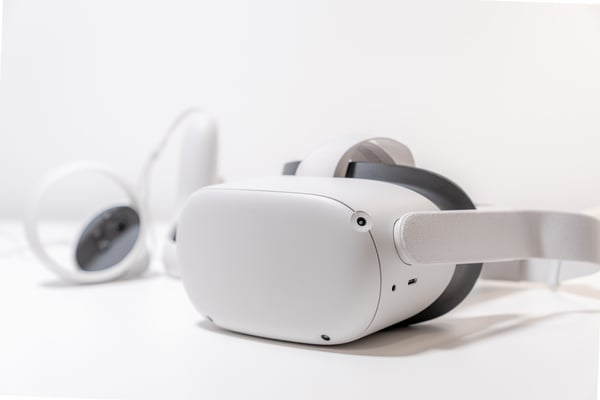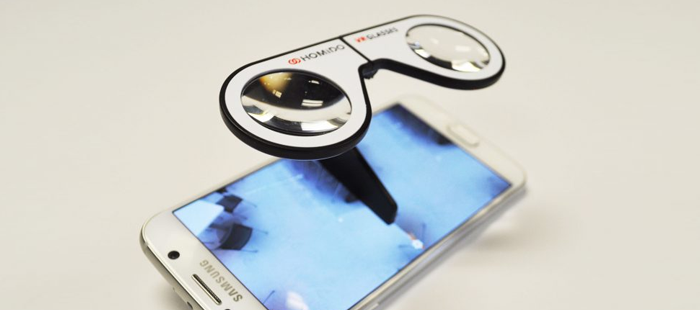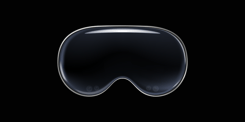Virtual Reality (VR) has become increasingly important in the field of architecture, as it allows architects and designers to create immersive and interactive experiences for clients and stakeholders. The use of VR in Architecture has the potential to revolutionize the industry, allowing architects to create more realistic and engaging design experiences for clients, while also improving the efficiency and accuracy of the design process.
However, architects who are looking into adding VR to their business may be wondering the best way to go about presenting their VR designs. In this article we will look at the key benefits of VR in architecture and how those factors are involved in choosing the best VR headset for architecture as each firm has different needs. Finally, we will offer up our top choices for the best headsets for architecture that you can get in 2023.
VR Presentations Lead to Clear Client Communication and Engagement in Architecture
Before you start trying to find the best VR headset for architecture, you need to first look at why VR has become so popular in the architecture industry and how that will influence your choice. VR technology enables architects to visualize their designs in three dimensions, making it easier to communicate complex ideas and concepts to clients and stakeholders. In traditional 2D visualizations, an aspect that was often not communicated clearly was scale and scope. You can tell someone that a certain design feature is this tall and this wide, but it will be hard for them to truly visualize that from a static image. Especially if this someone doesn’t have a strong design background. VR eliminates this issue as by simply viewing the project in 3D they will get the full scale and scope of your design by simply exploring in VR.

Additionally, VR enables architects to identify potential design flaws and make changes before construction begins, reducing the risk of costly mistakes. As we mentioned, those without strong design backgrounds may not fully grasp the size and shape of a design until they see it in person. It may take until the first walkthrough for them to see your design and then they will realize things aren’t as they thought. With VR you can give a walkthrough experience much earlier and catch these discrepancies. As well this VR experience will engage your client more, prompting them to ask questions and learn more. We like to say an engaged client is an informed client.
Key Considerations for Choosing Your Headset
Now that we have a better understanding of the benefits of using VR, we can look at what to consider when choosing the best VR headset for architecture when it comes to your firm. These are our key considerations when it comes to choosing your VR device:
- Immersion – The main goal of VR is to immerse your viewer to give them the clear preview they need. Minimizing outside distractions is key.
- Engagement – You want your viewers to be able to engage to the fullest with your design. Consider how they will be able to look around with the device and interact with the scene.
- Portability – You will want to consider how portable you want your VR experience to be. You’ll want to make sure you can present anywhere and do so safely.
- Investment – Choosing a VR device means an investment of some kind. You need to determine how much you want to pursue VR and from there make a proportionate investment into the hardware needed.
The good news is that based on these key considerations, you do have a fair number of options of devices to choose from. We chose our top recommendations based on these considerations, but as you are looking through them, make sure to take these considerations into your own mind and think about what works for you. The same device may not work for everyone in the same way.
Our Top Choices for the Best VR Headset for Architecture Presentations
The Meta Quest line - Our Top Choice
The Meta Quest devices are standalone headsets from Meta, which means that all you need to use the Quest anytime and anywhere is the headset and just the headset alone. The Quest line of headsets offer a strong immersive experience, as well as the added bonus that it's affordable, with the Meta Quest 2 starting at $400 USD. If you have a bit more budget you can spring for the Meta Quest 3, the latest release. It has very similar features to the Meta Quest 2, but has a bump in resolution and processing power that will just make and experience on it just a little smoother.

Even for those new to VR, the Quest line's onboarding steps are intuitive, effective, and actually quite fun. Getting used to the controls, setting up your boundaries, and navigating the virtual environment is quite enjoyable, which is another added pro for this headset. The included controllers are a great way for any viewer to interact with a VR scene. With Yulio, we even have developed an app for Quest devices, and you can use the controllers to interact with text, audio, and image hotspots in the scene.
Homido mini – An Easy Investment and Way to Try VR
The Homido Mini costs around $15 each and works with pretty much any smartphone, Homidos have greatly helped revolutionize the accessibility of VR and have given small independent businesses and firms the opportunity to harness the power of virtual reality.
The Homido Mini is small enough to fit in your pocket, meaning sales teams can easily showcase designs in VR wherever and whenever there’s an opportunity. Anyway you use them, they are lightweight, compact, and an effective affordable option. Aside from being straightforward to assemble, they're also highly ‘brandable’ so can be given away to prospects affordably. In the past, we have used them at trade shows and presentations, and they offer a solid viewing experience and an exciting giveaway.

These lower-end clip-on headsets are effective for mobile VR, but they don’t offer as immersive a viewing experience as some of the more expensive options like the Meta Quest line, because they let light in and allow the real world to intrude little on a virtual environment. And of course, the experience can be disrupted by incoming messages or calls on the device, so if you are presenting with one, adjust the phone’s settings.
One point of warning - the Homido style headsets may be limited in how effective they are depending on the screen size of your phone so you will want to test them before investing in multiple.
Some honorable mentions
While the Homido Mini and the Quest 2 are our top choices there are some other options out there that we did want to mention:
- Meta Quest Pro – This is the head-end headset in the Quest line from Meta. It is an impressive device with many new features and an equal focus on Augmented Reality (AR) as well as VR. It is one of the first commercially available Mixed Reality Headsets. However, with those new features comes a heftier price tag that makes it hard to recommend to those who are only looking to use VR as a presentation tool and not a main way of working with others
- Pico Neo Link 3 – The Pico Neo Link 3 is a VR headset that is a very comparable device to The Meta Quest 2. It has similar screens and features and can also operate as a standalone VR device. However, the Pico Neo is only available in Europe and East Asia at the moment.
We hope you have a better idea of what kind of device you should be looking for when it comes to selecting a VR headset for your architecture firm. Just keep in mind what you want your client to feel and the practicality of how you can share those VR experiences with them.







